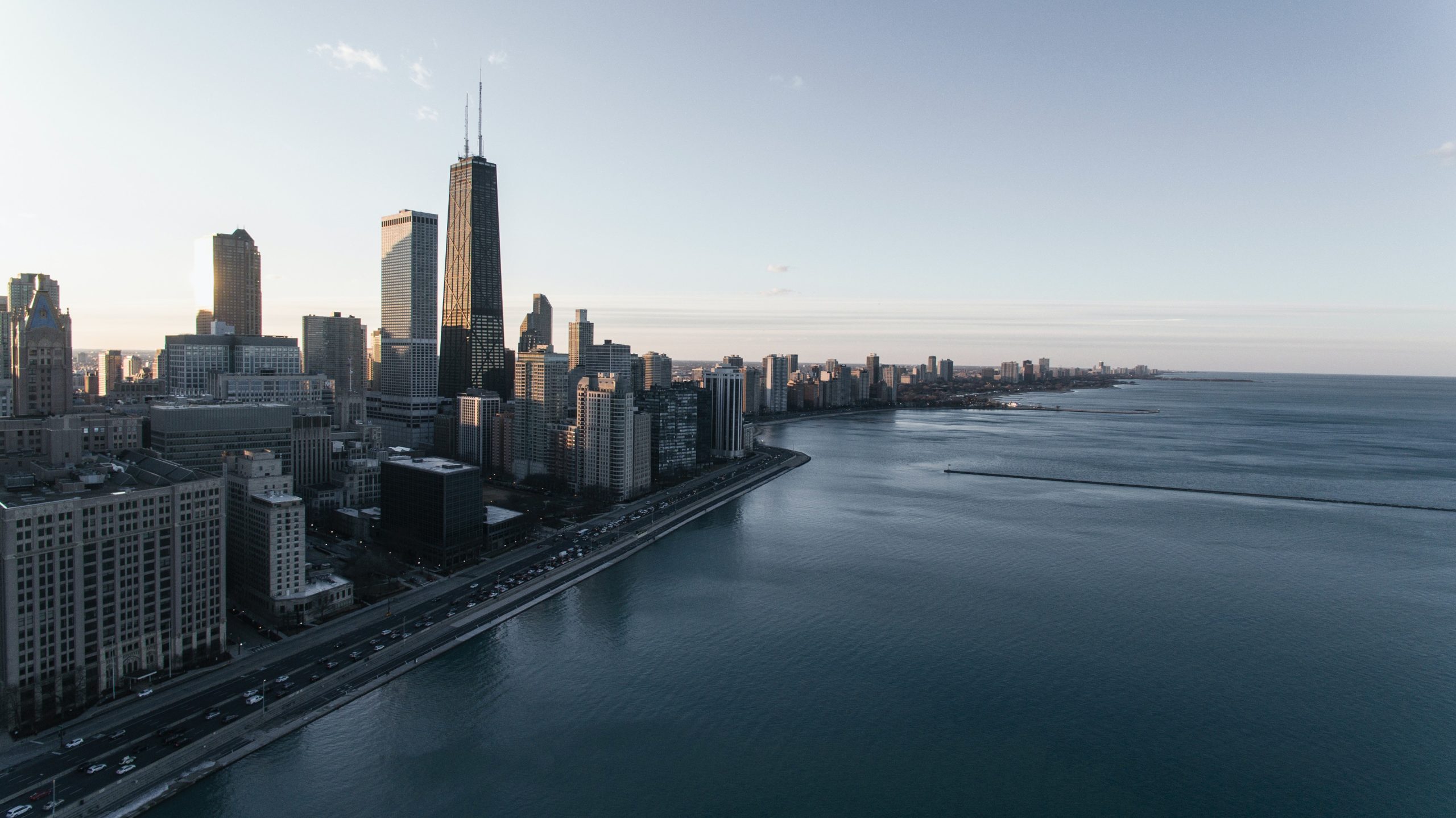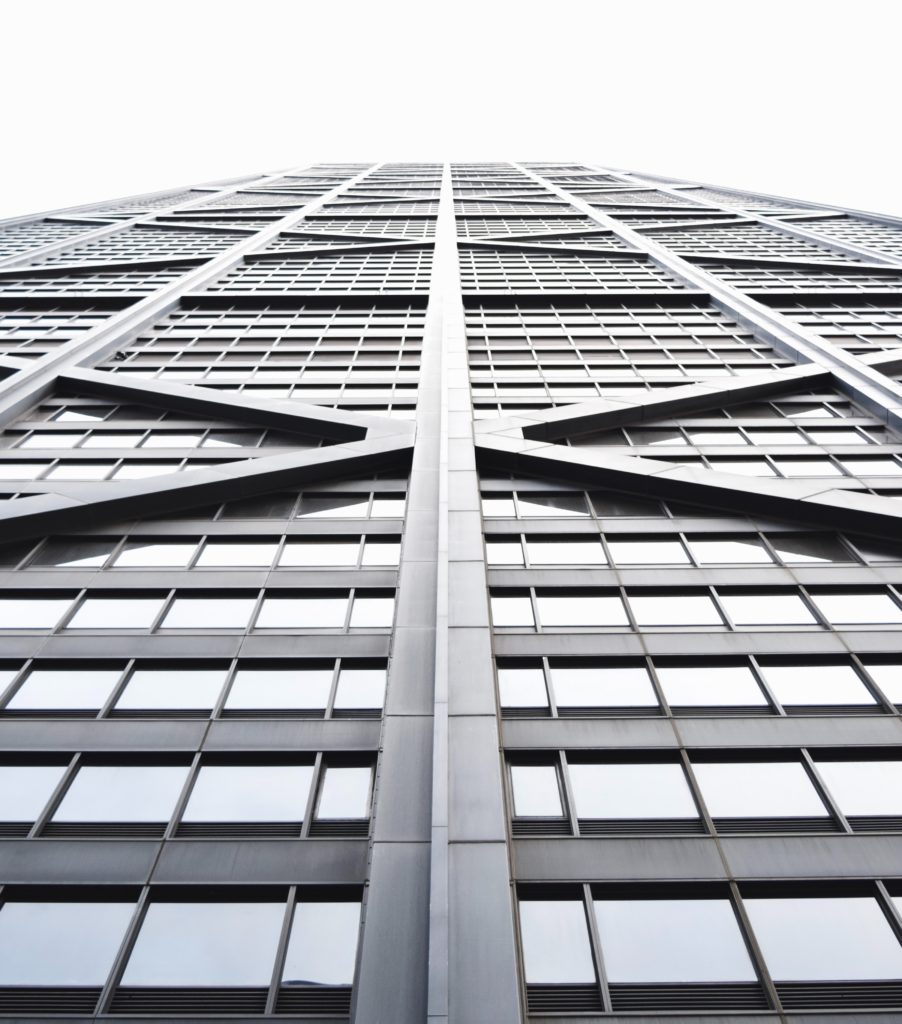Chicago’s Design Legacy Is Our Inspiration

Innovation, Functionality, and Clarity:
How Chicago’s Design Legacy Inspires Our Work at Millennial Web Development
When it’s good, web design appears effortless. The elements come together to be more than the sum of their parts. But when you’re in the middle of designing a website, you often need a breath of inspiration to cross the finish line. For us, we often visit other websites we love for inspiration. But another way that we find inspiration is by engaging with the architecture around us. There are vast and crucial parallels between architecture and web design, and for anyone who lives in Chicago like we do, a feast of inspiration is never more than a short drive away. From the stately Marquette Building, to Frank Lloyd Wright’s “organic architecture”, to the Bauhaus minimalism of Mies, there is hardly a place in the world more architecturally inspiring than our home here in Chicago. The parallels between architecture and web design are countless, and we look to Chicago’s rich architectural and design history every time we need a jolt of inspiration.
The Chicago School: A Distinctly Modern Movement
The Chicago school of architecture refers to the many innovations in design and architecture that were pioneered in Chicago. These revolutionary design concepts, beginning in 1884 with the world’s first skyscraper, continued to develop throughout the course of the 20th century with increasingly modern and minimalist flair, capturing the world’s attention and putting Chicago on the map.
When we think of the Chicago school, we think of three things: innovation, functionality, and minimalist design that feels free and open. Chicago’s architectural philosophy can show us how those three qualities work in concert with each other to produce designs that are solid, modern and yet timeless.
Innovation, Built to Last
The early Chicago school designers were among the first to construct commercial buildings with steel frames, allowing for maximum stability and almost limitless upward construction. Using this new technology, William Le Baron Jenny designed the world’s very first skyscraper, the Home Insurance Building, completed in 1884.
In web design, we take this lesson to heart. Fundamental to executing a visionary design you need a solid frame that can be modulated (expanded, modified and repeated) to support your ideas. The interlocking pieces of a website’s backend building blocks are the contemporary equivalent to the steel frames of a building. On top of and within that structure, we can innovate, building up and up and up…
Visionary Construction = Clarity of Vision
These steel frames did more than allow for upward construction though; they provided enough stability for the building to be outfitted with large, luminous, plate-glass windows, as in Holabird & Roche’s Marquette Building, completed in 1895. Not only did steel frames make the innovation of the skyscraper possible, but also for the buildings to be filled with light. Being inside a building made of steel and glass lends the visitor a sense of transparency as well as a luminous spaciousness. We try to recreate this feeling in our websites, giving the visitor a sense that anything is possible and that everything the website offers is at their fingertips.

“Less Is More”: The Modern Minimalism of Mies
One of Chicago’s best known architects was the German-American Ludwig Mies van der Rohe (or “Mies”), one of the fathers of modernist architecture. A former director of the Bauhaus, he escaped Nazi Germany to head up the Illinois Institute of Technology in 1937. From there, under his guidance, the “Second Chicago school” was born.
Mies was known for what he called “skin and bones” architecture, evident in the open, minimalist designs of his 860-880 Lakeshore Drive (the “Glass House Apartments”) and S.R. Crown Hall, which, completed in 1956, is so simple and clean that he once described its design as “almost nothing”.
“Less is more” was an aphorism Mies was fond of, and it’s exactly how we think of our approach to UI. Simple and uncluttered, so your visitors aren’t thinking about all the meticulous construction of the site – they’re just enjoying its seamless open space as everything works in harmony. The concept of modernism is a huge inspiration for us: we strive to make all our designs feel as transparent and accessible as those of Mies.
From Chicago, To The World
The Chicago school’s influence on architecture is hard to overstate. What started from a hotbed of ideas and collaborations in our fair city has grown to influence design philosophies all over the world. As in the case of the Chicago school, Millennial Web Development is deeply rooted in the vibrant and diverse community of Chicago, and from that hyper-local homebase, we’ve grown outwards and upwards to serve businesses across America and around the world. We couldn’t be prouder to be from this inspiring place we call home: Chicago.





